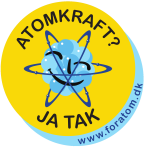What distinguishes a light water reactor from a molten salt reactor?
The difference between these reactors lies in their choice of coolant, whether water, gas, or liquid metal and the substance used as a moderator. The moderator plays a crucial role in the intricate dance of atomic energy by slowing down fast neutrons, allowing for the delicate balance of thermal fission to be sustained. Common moderators include water and carbon, which can be elegantly manifested in the form of graphite.
In essence, the choice of coolant and moderator can significantly impact the performance and efficiency of a nuclear reactor. Light water reactors, for example, use regular water as both a coolant and moderator. In contrast, molten salt reactors use a liquid salt mixture as a coolant and graphite as a moderator. This difference in design can lead to varying levels of safety, cost-effectiveness, and waste management.
Overall, understanding the nuances of nuclear reactor design is crucial for ensuring atomic energy’s safe and effective use. By carefully selecting the appropriate coolant and moderator, we can continue to harness the power of nuclear energy while minimizing its potential risks and drawbacks.




